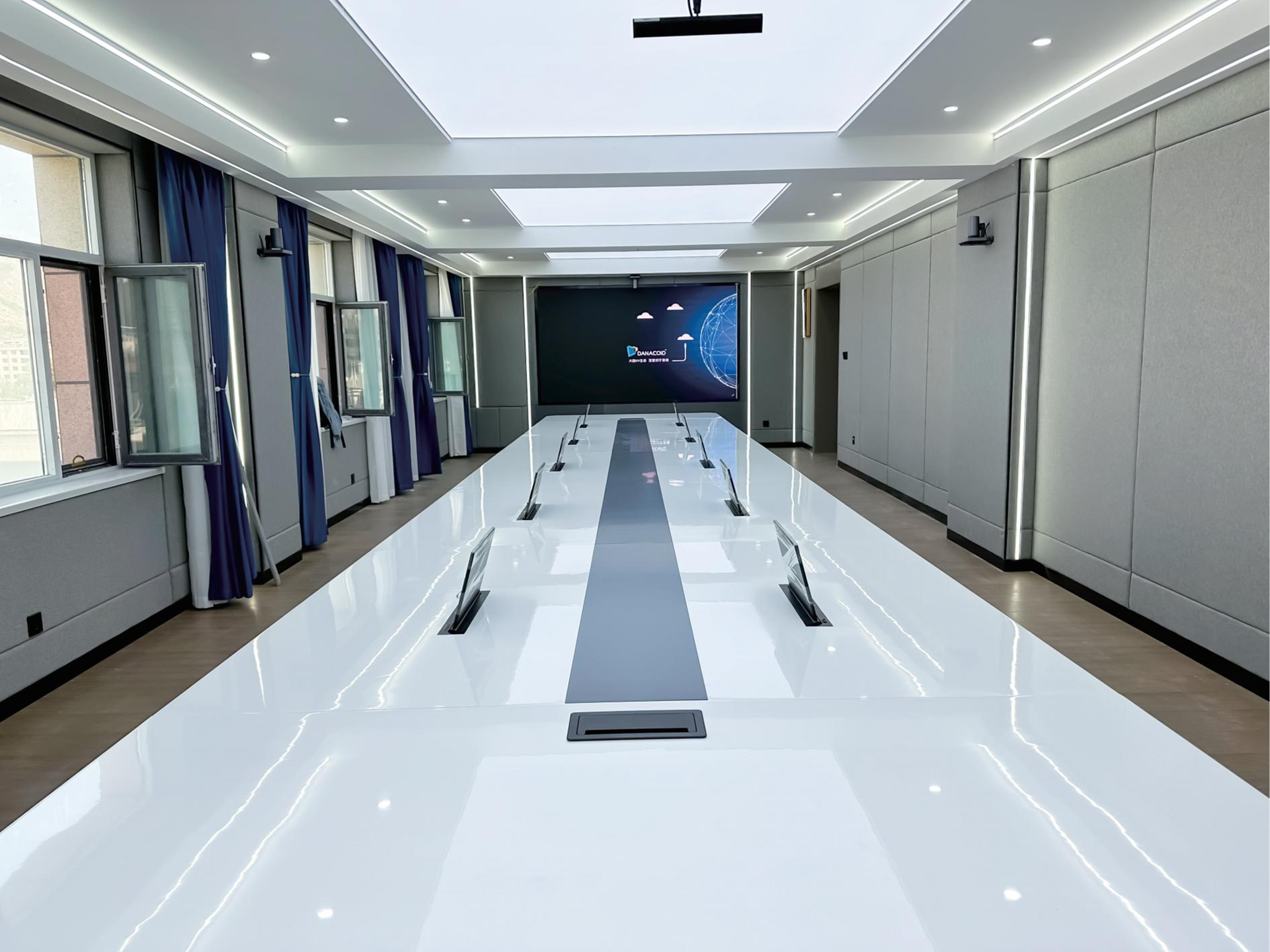Forstå innvirkningen av høyttaleroppstilling på lydkvalitet
Måten vi konfigurerer og plasserer høyttalere på, kan dramatisk forandre opplevelsen vår av lyd. Enten du setter opp et hjemmekinosystem, profesjonelt opptaksstudio eller en scene for liveopptredener, høyttalerkonfigurasjoner spiller en avgjørende rolle for å levere optimal lydkvalitet. Interaksjonen mellom høyttalere, romakustikk og lytteposisjon skaper et komplekst forhold som direkte påvirker lydopplevelsen.
Moderne lydsystemer omfatter ulike høyttalerkonfigurasjoner, hver designet for spesifikke formål og miljøer. Fra grunnleggende stereokonfigurasjoner til komplekse surroundlydoppsett, bidrar forståelse av hvordan ulike konfigurasjoner påvirker ytelsen til å oppnå best mulig lydgjengivelse. Denne omfattende guiden utforsker de viktigste aspektene ved høyttalerplassering og deres innvirkning på lydkvalitet.
Primære typer høyttalerkonfigurasjoner
Grunnleggende prinsipper for stereokonfigurasjon
Den klassiske stereooppsettet forblir ett av de mest utbredte høyttakeroppstillingene. Dette oppsettet består av to høyttakere plassert for å danne en likesidet trekant med lytteposisjonen. Høyre og venstre høyttaker arbeider sammen for å skape et stereobilde, og dermed skape dypde og bredde i lydbildet. Når det er riktig konfigurert, kan stereo høyttakeroppsett levere bemerkelsesverdig nøyaktig lydgjengivelse for musikklytting.
Kritiske faktorer i stereooppsett inkluderer avstand mellom høyttakere, innvendig vinkel (toe-in) og avstand til veggene. Det ideelle oppsettet plasserer vanligvis høyttakerne i øyenivå, med like store avstander mellom hver høyttaler og lytteren. Dette oppsettet maksimerer stereobilde og sikrer balansert frekvensrespons over hele lytteområdet.
Surroundlyd-systemer
Moderne hjemmekinoregissører og profesjonelle miljøer bruker ofte omgivelseslyd høyttaleroppsett. Vanlige oppsett inkluderer 5.1, 7.1 og stadig mer populære formater som Dolby Atmos. Disse oppsettene gir dypere innlevelse ved å plassere høyttalere rundt lytteområdet og skape et tredimensjonalt lydfelt.
Plasseringen av omgivelseshøyttalere påvirker betydelig deres ytelse. Sentralkanaler bør være justert med skjermen, mens omgivelseshøyttalere vanligvis monteres litt over ørenivå. Høydekanaler i avanserte oppsett legger til en ekstra dimensjon i lytteopplevelsen og skaper et mer omsluttende lydbilde.
Tekniske betraktninger ved plassering av høyttalere
Romakustikk og høyttalerinteraksjon
Forholdet mellom høyttalerkonfigurasjoner og romakustikk påvirker lydkvaliteten betydelig. Romstørrelse, overflatematerialer og plassering av møbler påvirker alle hvordan høyttalere fungerer. Harde overflater kan skape uønskede refleksjoner, mens myke materialer bidrar til å absorbere overskytende energi. Å forstå disse interaksjonene hjelper til med å optimalisere plasseringen av høyttalere for bedre ytelse.
Profesjonelle akustikere anbefaler ofte å holde bestemte avstander mellom høyttalere og vegger for å minimere bassoppbygging og tidlige refleksjoner. Tredjedelsregelen kan brukes som utgangspunkt, der høyttalere plasseres omtrent en tredjedel fra frontveggen målt av romlengden. Denne metoden bidrar til en mer balansert bassrespons og klarere midtområde-gjengivelse.
Fasejustering og tidskoherens
Riktig fasejustering mellom høyttalere sikrer sammenhengende lydgjengivelse. I oppsett med flere høyttalere blir tidsjustering stadig viktigere. Høyttalere som ikke er justert riktig kan føre til fasedestruksjon, noe som reduserer klarheten og påvirker den totale lyttingopplevelsen. Moderne digitale signalprosessorer inneholder ofte forsinkelsesjusteringsfunksjoner for å optimalisere tidsjustering i komplekse høyttaleroppsett.
Den fysiske plasseringen av drivere innenfor hver høyttaler påvirker også faseforholdene. Nøyaktig oppmerksomhet rundt høyttalerens orientering og plassering bidrar til å opprettholde riktig fasejustering gjennom hele lytteområdet. Dette blir spesielt viktig i profesjonelle anvendelser der nøyaktig lydgjengivelse er avgjørende.

Avanserte konfigurasjonsteknikker
Digital romkorreksjon
Moderne teknologi tilbyr sofistikerte verktøy for optimalisering av høyttalerkonfigurasjoner. Digitale romkorreksjonssystemer analyserer interaksjonen mellom høyttalere og rom, og justerer automatisk frekvensrespons og tidsavstemming for å forbedre ytelsen. Disse systemene kan betydelig forbedre lydkvaliteten, spesielt i utfordrende akustiske miljøer.
Romkorreksjonsteknologi fungerer ved å måle den akustiske responsen på flere posisjoner og deretter bruke korrektiv equalisering. Denne prosessen hjelper til med å overvinne romrelaterte problemer som påvirker høyttalerytelsen, noe som resulterer i mer nøyaktig lydgjengivelse. Det er imidlertid viktig å merke seg at romkorreksjon bør supplere, ikke erstatte, riktig plassering av høyttalere.
Subwoofer-integrasjon
Innkorporering av subwoofer i høyttalerkonfigurasjoner krever nøye vurdering av plassering og kryssveiklingsinnstillinger. Interaksjonen mellom hovedhøyttalere og subwoofer påvirker systemytelsen betydelig. Flere subwoofer kan hjelpe til med å oppnå en jevnere bassrespons gjennom hele lytteområdet.
Riktig integrering av subwoofer innebærer å sette passende kryssveiklingsfrekvenser og fasejustering. Målet er sømløs blending mellom subwoofer og hovedhøyttalere, og dermed skape et sammenhengende lydfelt. Rommåleverktøy kan hjelpe med å optimalisere plassering og innstillinger for best mulig ytelse.
Vanlige konfigurasjonsutfordringer
Plassbegrensninger og kompromisser
I det virkelige liv presenterer miljøer ofte utfordringer som krever kompromisser når det gjelder ideelle høyttaleroppsett. Begrenset plass, romutforming og estetiske betraktninger kan nødvendiggjøre alternative opplegg. Å forstå hvordan man kan tilpasse plasseringen av høyttalere uten at ytelsen forringes for mye, blir derfor avgjørende i slike situasjoner.
Kreative løsninger, som innebygde høyttalere eller kompakte satellittsystemer, kan hjelpe å overvinne plassbegrensninger. Selv om disse alternativene kanskje ikke leverer samme ytelse som optimale opplegg, kan en omhyggelig oppsett og romakustikk fremdeles gi tilfredsstillende resultater.
Hensyn ved flerbruksrom
Mange rom har flere formål og krever fleksible høyttaleroppsett. HJEM teatre kan også fungere som stuer, mens profesjonelle rom må kunne tilpasses ulike typer arrangementer. Å utforme allsidige høyttaleroppsett som fungerer godt i ulike scenarioer, stiller spesielle krav.
Modulære systemer og justerbare monteringsløsninger kan hjelpe til med å skape tilpassede konfigurasjoner. Å forstå hvordan ulike oppsett påvirker ytelsen, lar brukere optimalisere oppsettet for spesifikke anvendelser samtidig som fleksibilitet beholdes.
Ofte stilte spørsmål
Hva er den optimale avstanden mellom stereohøyttalere?
Den ideelle avstanden mellom stereohøyttalere er typisk lik avstanden fra hver høyttaler til lytteposisjonen, og danner en likesidet trekant. Dette oppsettet maksimerer stereoutbredelse og lydbildets bredde. Imidlertid kan romstørrelse og akustikk kreve at denne grunnleggende anbefalingen justeres for optimal ytelse.
Hvordan påvirker takhøyde plassering av høyttalere?
Takhøyde påvirker høyttalerens ytelse ved å påvirke rommoder og refleksjonsmønstre. Høyere tak gir generelt mer fleksibilitet i plassering av høyttalere, men kan kreve ekstra akustisk behandling. For høydekanaler i immersive lydsystemer, påvirker takhøyden direkte den optimale monteringsposisjonen og vinkelen.
Bør høyttalere plasseres i ørenivå?
Hovedhøyttalere yter vanligvis best når diskanten er justert til ørenivå ved lytteposisjonen. Denne plasseringen sikrer optimal spredning av høye frekvenser og bildeformasjon. Omgivelses- og høydekanaler monteres derimot ofte over ørenivå for å skape et mer immersivt lydfelt.
Hvordan påvirker ulike romformer høyttalerkonfigurasjonen?
Romform har stor betydning for optimal konfigurasjon av høyttalere. Rektangulære rom gir typisk mer forutsigbar akustisk oppførsel, mens uregelmessige former kan kreve spesialiserte plasseringsløsninger. Å forstå rommoder og refleksjonsmønstre hjelper til med å bestemme den mest effektive høyttaleroppstillingen for et gitt rom.









